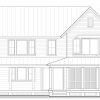Thunderstorms and lightning are most likely to develop on hot, humid days and can be very dangerous to construction workers. Lightning kills about 80 people each year and injures hundreds.
Lightning seeks “ground” to discharge its energy and will complete the circuit by striking the tallest object (trees, utility poles, and towers, or a person standing in an open field). It will also strike metal objects and water.
Lightning often strikes outside heavy rain and may occur up to 10 miles away from any rainfall.
Risk Assessment/Hazards – The following are identified as hazards that may result from a lightning strike:
- A direct strike usually results in cardiac arrest and/or stoppage of breathing. If the current passes through the heart or the brain, death may occur.
- A side flash may occur when the body of a person provides an alternate or parallel path for the current. Conducted current from a lightning flash or strike may range from a tingling shock to a massive current diverted from a poorly grounded utility pole through the power grid system.
- Step voltage radiates out through the ground from a struck tree or utility pole affecting any person close to the pole.
Control Measures/Safeguards – Implement the following safe work procedures to eliminate or reduce an injury that may result from a lightning strike:
- Pay attention to the daily forecasts so you know what to expect during the day.
- Pay attention to early signs of thunderstorms: high winds, dark clouds, rain, distant thunder or lightning.
- Stay off and away from tall objects like: scaffolding, ladders, and large equipment such as bulldozers, cranes and excavators.
- Do not touch materials or surfaces that can conduct electricity including metal scaffolding, metal equipment, utility lines, water, water pipes and plumbing.
- When you see lightning, count the seconds until you hear thunder. If that time is 30 seconds or less, the storm is within 6 miles and is dangerous.
- Seek shelter immediately. A safe shelter is an enclosed building. Avoid open-air structures and tall trees.
- If caught in the open, crouch low. Do not lie on the ground. You are more apt to receive a secondary shock from the ground if lightning strikes near you.
- Wait at least 30 minutes after the last clap of thunder before leaving shelter.
If someone is struck:
- Victims do not carry an electrical charge and may need immediate medical attention.
- Monitor the victim and begin CPR or AED, if necessary.
- Call 911 for help.
Fires, fallen trees or poles, and wires, are other hazards which are secondary effects that also cause injuries.
BE SAFE — TAKE SHELTER IMMEDIATELY FROM LIGHTNING










